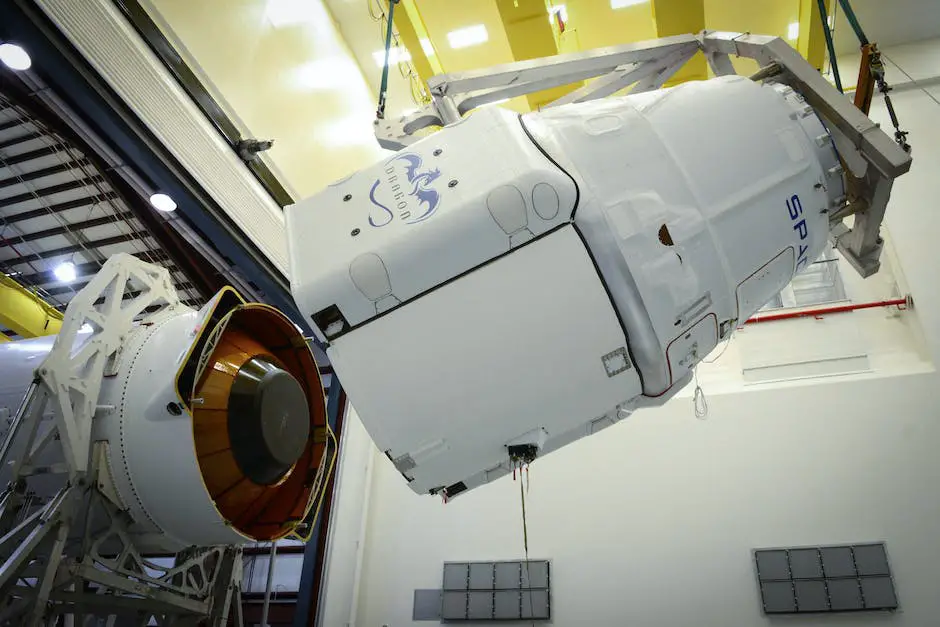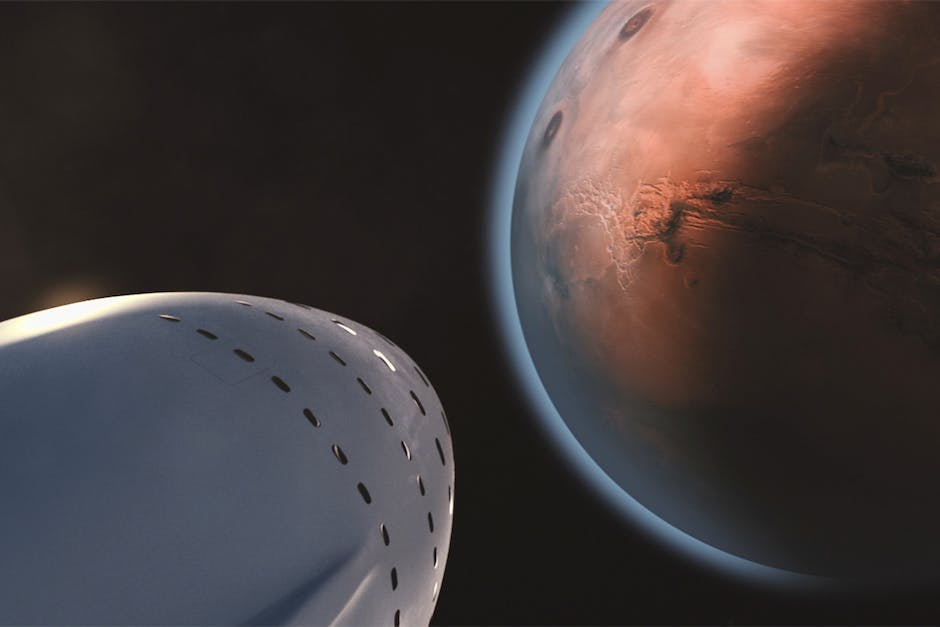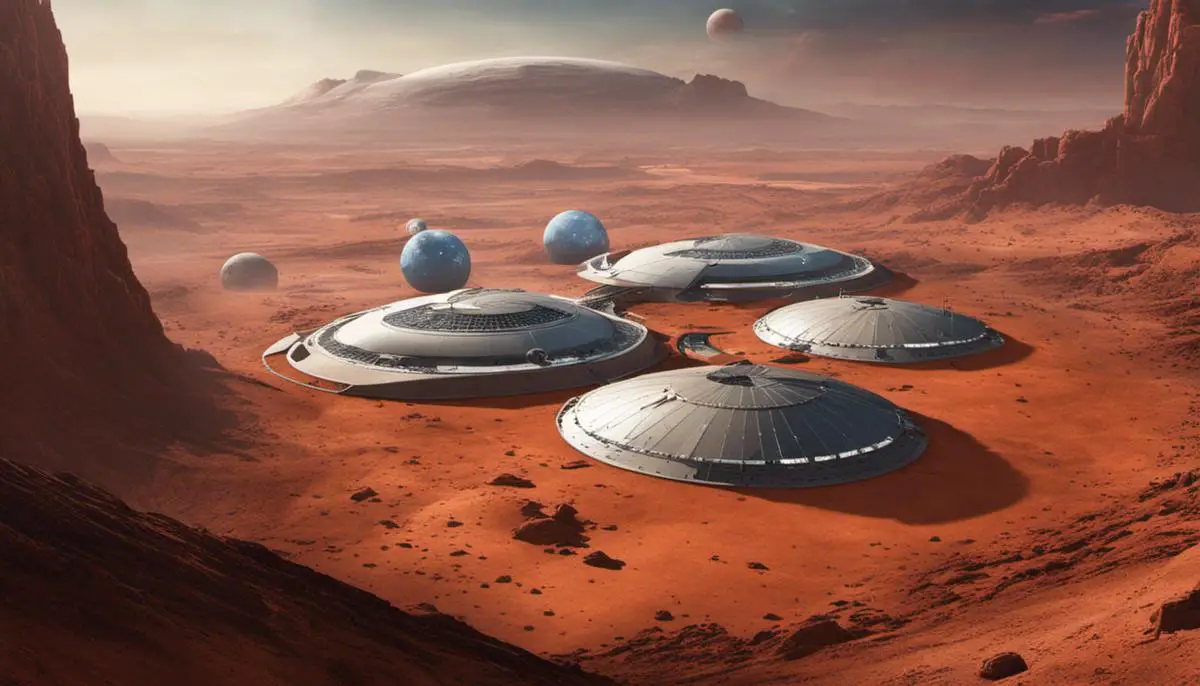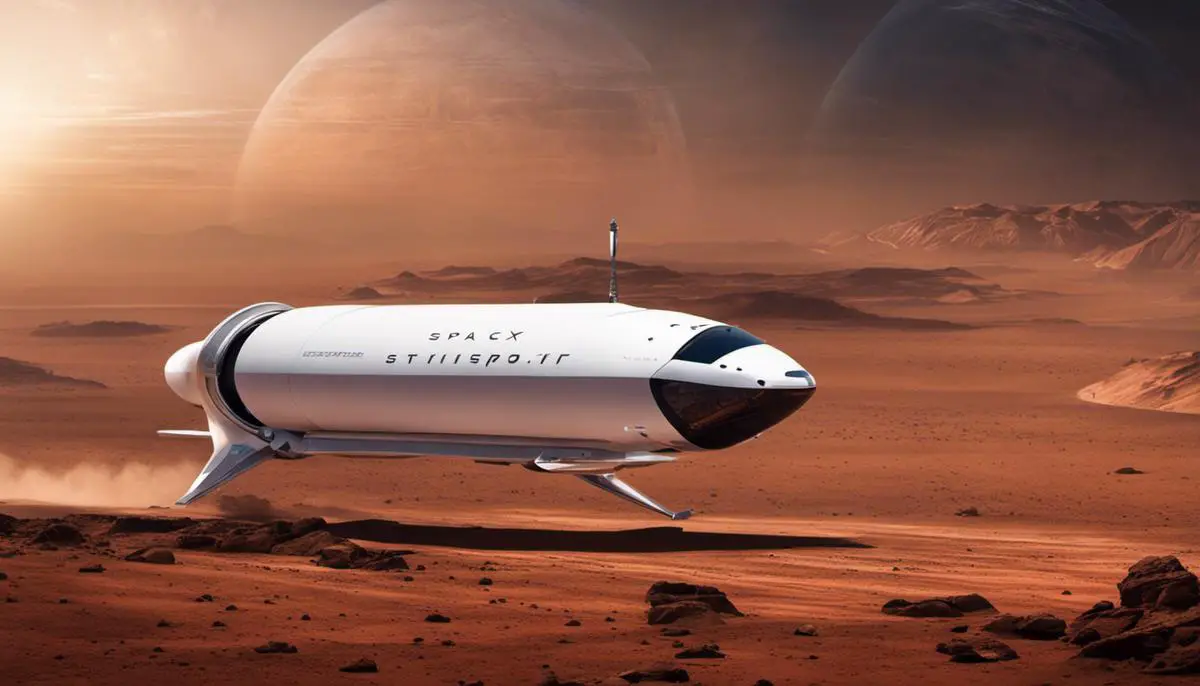In a world where technological advancement is remolding the contours of human life, one venture stands out – SpaceX’s Mars Transport System. Best known as the Starship, this revolutionary spacecraft is a key component in SpaceX’s ambitious plans to enable mankind to become a multiplanetary species. Designed with unprecedented capabilities and state-of-the-art physical attributes, the Starship is being engineered to carry humans and the necessary supplies for establishing a colony on Mars. This creation of an interplanetary transport system is the harbinger of a new era in space exploration, pushing the boundaries of what is humanly possible.
Overview of SpaceX’s Mars Transport System
SpaceX’s Mars Transport System: Embodying a Larger Vision
Pioneered by SpaceX, the Mars Transport System (MTS), also referred to as the Starship, symbolizes an ambitious endeavor targeted at making human life multiplanetary. Within the paradigm of SpaceX’s overarching mission, the MTS is intended to serve not just as a vehicle for interplanetary travel, but the springboard for human colonization of Mars. This aim is rooted in a broader vision: ensuring the continuity of human life as we venture into an era of potential existential risks.
What is the Mars Transport System?
The Mars Transport System is a fully-reusable, two-stage spaceship system developed by SpaceX. From design to operation, everything about the MTS revolves around the concept of making space travel affordable and sustainable. The spacecraft is made up of two stages – the spacecraft itself, referred to as Starship, and the rocket, known as the Super Heavy booster.
Physical Characteristics of the Mars Transport System
The Starship stands 50 meters tall and has a diameter of 9 meters, with the Super Heavy adding another 70 meters to the overall structure height. Fabricated from stainless steel, the ship’s design takes into account thermal tolerance, structural integrity, and cost-effectiveness. It incorporates a heat shield for re-entry and is powered by six Raptor engines.
The Super Heavy, on the other hand, deploys up to 37 Raptor engines to provide the thrust necessary for the Mars Transport System to escape Earth’s gravitational pull. The Super Heavy serves a double role, both propelling the spacecraft out of the Earth’s atmosphere and landing back on Earth for reuse after detaching.
Capabilities and Specifications of the Mars Transport System
SpaceX designed the MTS with a payload capacity of over 100 metric tons to Mars, with the goal of transporting up to 100 human passengers per vehicle. Moreover, the Starship is engineered for refueling in orbit, significantly extending the spacecraft’s range and enabling travel to places as far as Mars.
In addition to the spacecraft’s state-of-the-art life support system, the Mars Transport System will be outfitted with amenities to enable extended crewed missions. These may include sleeping quarters, a common area for relaxation and recreation, and a storage area for necessary supplies and equipment.
Revolutionizing Space Travel with SpaceX’s Mars Transport System
SpaceX is ushering in a new era in space exploration through its innovative Mars Transport System. This concept revolves around the design of a reusable spacecraft powered by liquid methane and oxygen. Capable of carrying large crews, and fine-tuned through a process of swift iteration, this futuristic system promises to shift paradigms in space travel. In sharp contrast to the current single-use rocket systems, this grand-scale, reusable technology is a significant stride towards enduring, sustainable space exploration and eventual colonization.

Mars Transport System’s Development and Launch Plans
From Elon Musk’s Vision to the Reality of Starship
In SpaceX’s journey to frontier pioneering, the first major step was taken by founder Elon Musk in 2017 when he detailed his vision for making life multiplanetary. This marked the conceptual beginnings of the Mars Transport System, better known today as Starship. Back then, Musk’s initial design entailed a two-stage vehicle, equipped with a powerful booster that would launch a large spaceship intended for transporting passengers and cargo. Since that time, SpaceX has embarked on an ambitious trajectory, circling through numerous design modifications, iterations, and prototypes to bring this audacious concept to life.
Key Milestones and Testing
A breakthrough came in December 2020, when the SN8 prototype successfully performed a high-altitude flight and belly-flop maneuver, despite exploding upon landing. The Starship SN10, launched in March 2021, became the first prototype to successfully land without immediate explosion.
SpaceX has conducted hundreds of tests, simulations, and examinations throughout the development process, ranging from pressure tests and static fire tests to test flights. These rigorous testing protocols have been integral to ensuring the safety, stability, and success of the Starship in its future missions.
SpaceX’s Plan: Bringing Mars Within Our Reach
With an exciting vision of future space travel, SpaceX is preparing for its first uncrewed mission to Mars, named Mission Alpha. Expected as early as 2022, this event is banking on the successful completion of ongoing development and testing processes.
Before reaching Mars, SpaceX has scheduled a lunar mission, “DearMoon,” for 2023, using the Starship spacecraft. This moon mission will provide critical data regarding the spacecraft’s behavior in deep space and prepare it for later human missions.
Looking further ahead into the mid-2020s, SpaceX plans to begin ferrying humans to Mars. Preceding this, Starship cargo missions will lay the essential groundwork on Mars to sustain human life. Musk’s ambitious vision includes a self-sustaining Martian colony that could operate independently of Earth.
However, these ambitious plans depend on regulatory approvals, the success of readiness tests, and ongoing technical developments. Precise timelines are variable, yet SpaceX’s unyielding ambition towards Mars colonization remains steadfast.

Challenges and Potential Solutions for Mars Colonization
Challenges & Solutions for Long-duration Space Travel
The journey to Mars is no small feat due to the vast distance it lies from Earth. The transit to the red planet could range between six to nine months, depending on the planets’ alignment and the spacecraft’s speed. This extended period poses varying challenges, including the complexity of spacecraft maintenance and the possible psychological impact of prolonged confinement and isolation on the crew.
SpaceX proposes a solution to these hurdles with the Mars Transport System, aka the Starship. Elon Musk’s private aerospace company is developing the Starship as a fully reusable spacecraft with superior maintenance capabilities, promising both cost-effectiveness and operational efficiency. To address potential mental health issues, a thorough pre-journey training program to equip the crew with essential coping strategies is in focus.
Human Health Concerns and Suggested Preventions
The environmental conditions on Mars are vastly different from those on Earth. The red planet has reduced gravity, intense radiation, and an inhospitable atmosphere, leading to substantial concerns about human health. Astronauts will likely face muscle and bone density loss due to lower gravity, and prolonged exposure to cosmic radiations could increase the risk of cancer. Additionally, Mars’ thin atmosphere presents challenges with respiration.
Addressing these concerns, SpaceX is contemplating the use of artificial gravity during the voyage and a shielding mechanism to counteract deadly radiations. While on Mars, habitats are planned to be established underground to offer natural radiation shielding. Additionally, suits for outdoor activities will need to incorporate life-supporting technology for safe breathing.
Talking about Sustainable Life-Support Systems
Sustaining human life on Mars will necessitate essentials such as food, water, and oxygen. The landscape of Mars is barren, and the planet lacks easily accessible water, making human survival a significant hurdle.
SpaceX plans to address these challenges through a process known as In-Situ Resource Utilization (ISRU). It involves the extraction of essential elements from the Mars environment itself. For instance, SpaceX plans to generate fuel for the return journey by synthesizing methane from the carbon dioxide in Mars’ atmosphere and extracted subsurface water.
Ethical and Logistical Concerns
The idea of colonizing Mars also raises several ethical and logistical concerns. Some questions relate to how to manage Martian colonies, potential impacts on the Martian environment, and the consequences for extraterrestrial life if it exists.
Given the vastness of these concerns, they cannot be addressed by SpaceX or any single entity alone. It calls for global cooperation and unified policy-making, concerted scientific efforts, and extensive dialogue, including Martian law and humans’ impact on Mars’s potential ecosystems.
An Overview
The colonization of Mars is a challenging endeavor, but SpaceX is demonstrating its potential to take on these hurdles through its Mars Transport System. The company’s strategy reflects prudence, determination, and a commitment to technological innovation. In aligning with international partnerships and agreements, SpaceX could potentially realize the long-standing science fiction dream of populating Mars.

Economic and Societal Impact of Mars Colonization
Potential Economic Shifts
Should SpaceX’s Mars Transport System contribute to human settlement on Mars, predictions indicate a transformative shift in our global economy. The capstone of the venture lies in its ability to potentially spark expansive industry growth and create entirely new economic sectors, with the aerospace industry poised to feel the immediate impacts. As we develop technologies and apparatus required for Martian life, innovation within the aerospace industry is expected to skyrocket.
Moreover, the ripple effects of such a catalytic venture could significantly benefit associated fields such as robotics, artificial intelligence, and manufacturing. Robotics and AI are to be used extensively in our efforts to construct habitable accommodations and to perform essential tasks on Mars, thus placing them in the spotlight. Simultaneously, the manufacturing industry might flourish in response to the increased demand for materials and components critical to space exploration.
Aside from advancements in technology and manufacturing, Mars offers potential mining opportunities. Given the high cost and extended duration of resupply missions from Earth, resource extraction and usage on Mars is critical for a self-sustaining colony. This positions the mining industry on the cusp of previously unexplored prospects.
In addition to these implied shifts, Mars colonization could indirectly stimulate the expansion of other commercial sectors such as space tourism, property trading, entertainment, and telecommunications on the red planet.
Societal Changes and the Evolution of Laws, Ethics, and Perception
The colonization of Mars presents societal changes that venture into uncharted territories. Current societal institutions would need to adapt to the realities of the Martian community.
Firstly, legal systems would need to change to cater to a society that exists beyond the confines of Earth. Existing laws regarding property rights, crime, and dispute resolution may not be able to accommodate the unique circumstances of a Martian colony. New legal frameworks would need to be created and implemented to govern the community on Mars.
Secondly, the ethics of colonizing Mars would be a vital discussion point. These debates would center around the responsibilities towards Mars itself such as the ethics of terraforming, the impact on any potential Martian life, and the conservation of Mars for future generations.
Perceptions towards space exploration and life on other planets would also evolve drastically. With the colonization of Mars, the idea of extraterrestrial life would transition from being a concept of science fiction to reality. This could radically shift our perception of humans as a multi-planetary species.
The Mars Transport System will be an integral part of this societal shift, offering transportation for future colonists and forming the bridge between Earth and Mars. A deeper understanding of our universe, alongside technological and economic advancements, are waiting for us in this new frontier.

As humanity contemplates the dawn of interplanetary civilization, the economic and societal ramifications of Mars colonization imposes on us a spectrum of changes unprecedented in our history. New industries may sprout to support this endeavor; existing ones might adapt and innovate, ensuring the economic viability of such a mission. As we stride towards a future that might see humans dwelling in Mars, it demands an evolved perspective on our laws, ethics, and societal norms. This profound advance, although fraught with challenges and ethical debates, has the potential to irreversibly alter the course of human civilization. It is our collective endeavor, as witnesses and partakers in this space odyssey, to embrace the nuanced complexities and the sweeping transformations it ushers in.
![]()
